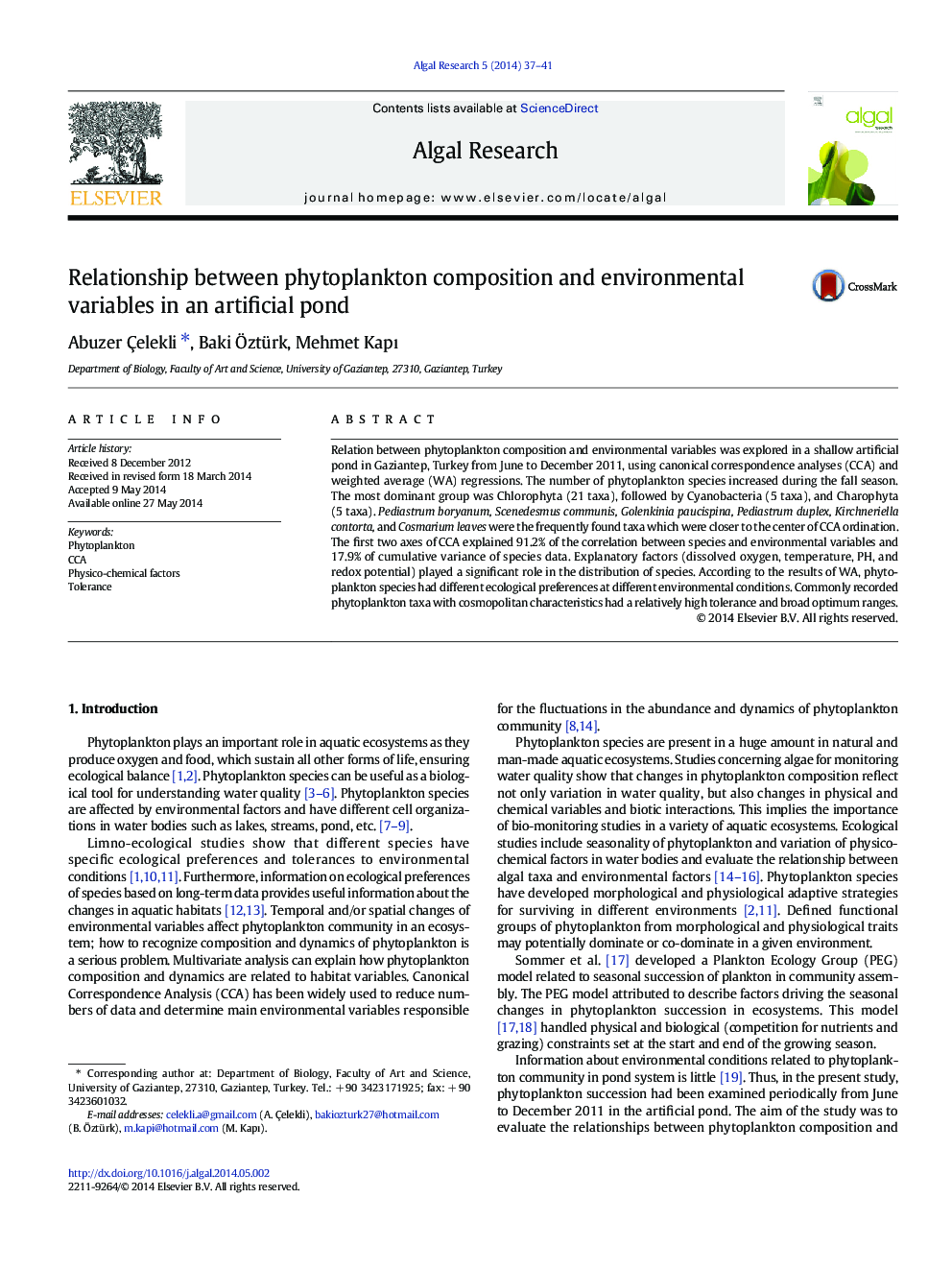| Article ID | Journal | Published Year | Pages | File Type |
|---|---|---|---|---|
| 1742103 | Algal Research | 2014 | 5 Pages |
Relation between phytoplankton composition and environmental variables was explored in a shallow artificial pond in Gaziantep, Turkey from June to December 2011, using canonical correspondence analyses (CCA) and weighted average (WA) regressions. The number of phytoplankton species increased during the fall season. The most dominant group was Chlorophyta (21 taxa), followed by Cyanobacteria (5 taxa), and Charophyta (5 taxa). Pediastrum boryanum, Scenedesmus communis, Golenkinia paucispina, Pediastrum duplex, Kirchneriella contorta, and Cosmarium leaves were the frequently found taxa which were closer to the center of CCA ordination. The first two axes of CCA explained 91.2% of the correlation between species and environmental variables and 17.9% of cumulative variance of species data. Explanatory factors (dissolved oxygen, temperature, PH, and redox potential) played a significant role in the distribution of species. According to the results of WA, phytoplankton species had different ecological preferences at different environmental conditions. Commonly recorded phytoplankton taxa with cosmopolitan characteristics had a relatively high tolerance and broad optimum ranges.
